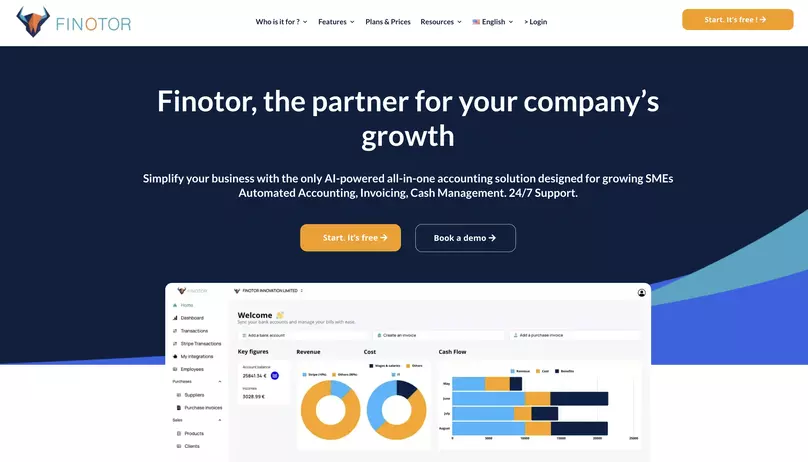Contents
Defining the Fiscal Quarter: Q3 in Perspective
Understanding Fiscal Quarters: Basics and Beyond
The concept of a fiscal quarter is pivotal in financial reporting and planning. A fiscal quarter refers to a three-month period within a company’s fiscal year during which financial performance is measured and reported. In most cases, it aligns with the calendar year quarters, starting from January 1st. However, companies can define their fiscal year differently, leading to variations in quarter start and end dates. Investopedia provides an in-depth explanation of how fiscal quarters are structured and their importance in financial assessments.
The Significance of Q3 in Financial Planning
What is Q3 or the third quarter? Q3 of the fiscal year, is often seen as a critical period for organizations to evaluate their year-to-date performance and adjust strategies accordingly. It is a time to reflect on the outcomes of the busy first half of the year and to forecast the year-end results. Understanding what Q3 entails is essential for financial planning, as it can inform decision-makers about the health of their business and guide them in setting realistic targets for Q4. More on the implications of Q3 can be found through this insightful resource on Universal CPA Review.
Comparing Calendar Year vs. Fiscal Year Quarters
Distinguishing between calendar year and fiscal year quarters is very important for accurate financial reporting and analysis. The calendar year quarters are uniform, ending on March 31st, June 30th, September 30th, and December 31st. On the other hand, a fiscal year may shift these dates to align with business cycles or industry norms, affecting the corresponding quarter’s end dates. This understanding is vital for investors, stakeholders, and internal management to ensure comparisons are made on a like-for-like basis. Companies like Finotor specialize in providing solutions that help businesses navigate through these differences, easing the burden of financial management and reporting.
Q3 End Dates: A Global Overview
Variations in Fiscal Year Endings by Country
When discussing the end of Q3, it’s essential to recognize that fiscal year endings can vary significantly across the globe. For instance, while in the United States the fiscal quarter typical ends on September 30th, other countries may follow a different schedule. In Australia, the fiscal year ends on June 30th, meaning Q3 concludes on March 31st. This variation in fiscal year calendars affects not only financial reporting but also strategic planning and operations for multinational corporations. Understanding these variations is determinant for companies operating on a global scale, as it influences compliance with local tax laws and financial regulations. Detailed knowledge of international fiscal calendars is an asset that a comprehensive financial management platform like Finotor can provide, ensuring seamless integration and adherence to global financial standards.
Case Studies: How Different Industries Close Q3
The approach to closing Q3 can differ substantially between industries. For example, the retail sector, preparing for the holiday season, might increase inventory and adjust forecasts. In contrast, the technology sector may focus on R&D expenditure and product launches timed for Q4. These industry-specific practices can be observed in financial results disclosed by major companies. Interested parties can often find detailed Q3 reports, such as those provided by Intel Corporation, which offer insights into how different sectors manage and report their quarterly financials.
The Impact of Financial Regulations on Quarter Closings
Financial regulations play a pivotal role in how companies close their quarters. Regulatory bodies often set deadlines for financial reporting, and these can influence the internal timeline for closing the books. For instance, the SEC (Securities and Exchange Commission) in the United States has specific filing deadlines that public companies must adhere to. Non-compliance can lead to penalties, making it vital for companies to stay aware of regulatory changes and reporting requirements. Tools like Finotor aid in maintaining compliance by providing updated information and automating reporting processes. Additionally, resources like the Desktop Staleness Calendar from law firm Latham & Watkins offer guidance on the latest reporting timelines, helping companies to anticipate and prepare for financial regulations affecting quarter closings.
Strategic Financial Management at the Close of Q3
As the third fiscal quarter draws to a close, businesses must undertake strategic financial management to ensure a smooth transition into Q4. This critical juncture allows companies to evaluate their performance, adjust forecasts, and prepare for end-of-year financial activities. In the context of Finotor’s all-in-one financial management solution, this period represents an opportunity to leverage technology for efficiency and precision in financial operations.
Preparing for Q3 Reporting: A Checklist for Businesses
Q3 reporting is more than a regulatory requirement; it is a strategic tool for assessing a company’s financial health. A comprehensive checklist for Q3 reporting should include:
- Consolidation of financial statements and accounting records.
- Verification of transactions and ledger entries.
- Reconciliation of bank statements, especially for integrations with systems like Stripe and WooCommerce, which can be streamlined through solutions offered by Finotor.
- Review of quarterly tax obligations to ensure compliance.
- Detailed analysis of budget variances.
- Preparation of management reports and insights for decision-making.
Tackling these tasks with diligence sets the stage for a productive end to the fiscal year, positioning businesses for success in the upcoming quarter.
Utilizing Technology for Efficient Quarter-End Processes
Embracing innovative technologies such as AI and machine learning can greatly enhance financial management at quarter-end. Finotor’s platform utilizes these technologies to automate and streamline financial tasks, which is particularly decisif during the busy Q3 close. The benefits of employing such technologies include:
- Automated reconciliation processes, which reduce errors and save time.
- Real-time financial data analysis for immediate insights and action.
- Integration of financial data from multiple sources, ensuring accuracy and completeness.
- Enhanced security measures to protect sensitive financial information.
Incorporating technology in quarter-end processes allows businesses to focus on strategic initiatives rather than getting bogged down by routine tasks.
Best Practices for Financial Reconciliation at Quarter-End
Financial reconciliation at the end of Q3 is vital for ensuring the integrity of financial reports. Some best practices include:
- Maintaining a consistent and timely reconciliation schedule to avoid a backlog of work.
- Using reconciliation tools that can interface with systems like Microsoft’s financial platform for accurate and efficient data compilation.
- Ensuring all financial data is aligned with the fiscal calendar, as outlined on resources like Wikipedia’s calendar year page.
- Implementing internal controls and audit trails to track changes and adjustments made during the reconciliation process.
- Engaging cross-functional teams to provide insights and validate financial data from various business perspectives.
Adhering to these practices can mitigate risks and position the company for a transparent and trustworthy Q4 and year-end reporting.
Looking Beyond Q3: Planning for Q4 and Year-End
Forecasting and Budgeting for the Final Quarter
As businesses approach the end of the third fiscal quarter (Q3), forward-looking financial strategy becomes essential. Forecasting and budgeting for Quarter 4 (Q4) involve analyzing the current year’s Q3 data to predict future trends and allocate resources effectively. Effective budgeting requires understanding the seasonal influences on the market, evaluating the company’s current financial health, and anticipating potential risks and opportunities. Tools provided by Finotor can help streamline this process by automating data analysis and offering real-time financial insights, ensuring that businesses can make informed decisions as they plan for the year-end crunch.
The Role of Data Analysis in Year-End Strategy
In today’s data-driven business world, the ability to analyze and interpret financial data is key to developing a robust year-end strategy. By leveraging data analytics, companies can uncover patterns and insights that inform strategic decisions. Advanced analytics, powered by AI and machine learning, are at the core of services like those offered by Finotor, which can transform raw data into actionable intelligence. This enables a company to not only review past performance but also to predict future outcomes and optimize year-end strategies for better financial health.
Setting Goals and Objectives Post-Q3 Review
After the close of Q3, it’s time to set goals and objectives for the upcoming quarter and beyond. This involves a thorough review of Q3 performance, understanding shortcomings, and recognizing achievements. The Q3 review should inform the strategic planning process, guiding the setting of realistic and achievable targets. Incorporating the insights gained from Q3 can help in crafting a roadmap that aligns with the company’s long-term vision and the ever-evolving market demands. Utilizing resources like the reporting analysis from Starbucks’ Q3 fiscal report can provide a template for setting robust post-Q3 objectives.
Understanding when Q3 ends is essential for effective business planning. Whether it’s following the traditional calendar year or aligning with a company’s specific fiscal year, the end of Q3 marks a critical time for reflection and preparation. For more detailed insights into the earnings reporting season, including the specifics of when each quarter’s reporting begins and ends, refer to the comprehensive overview on Quora.









